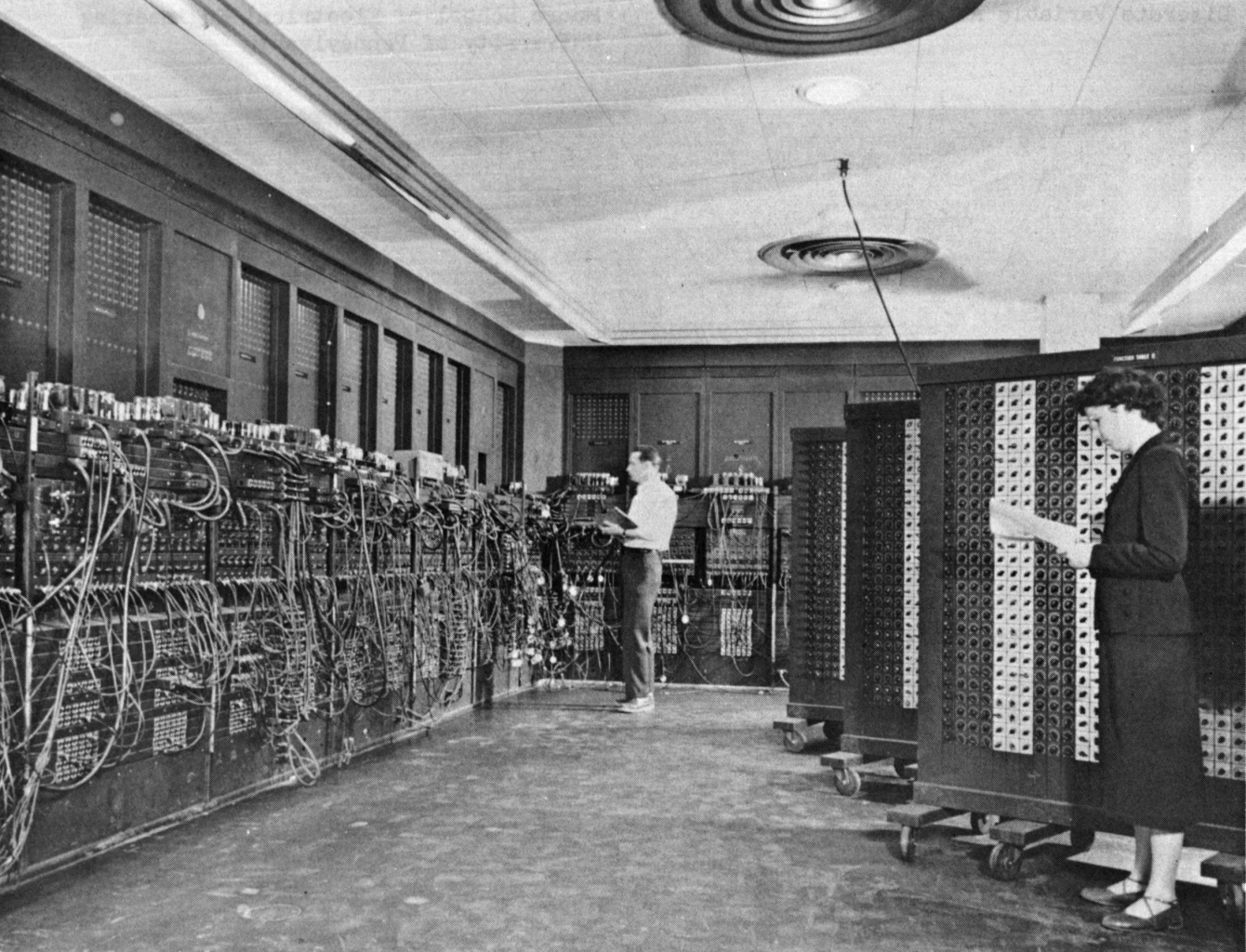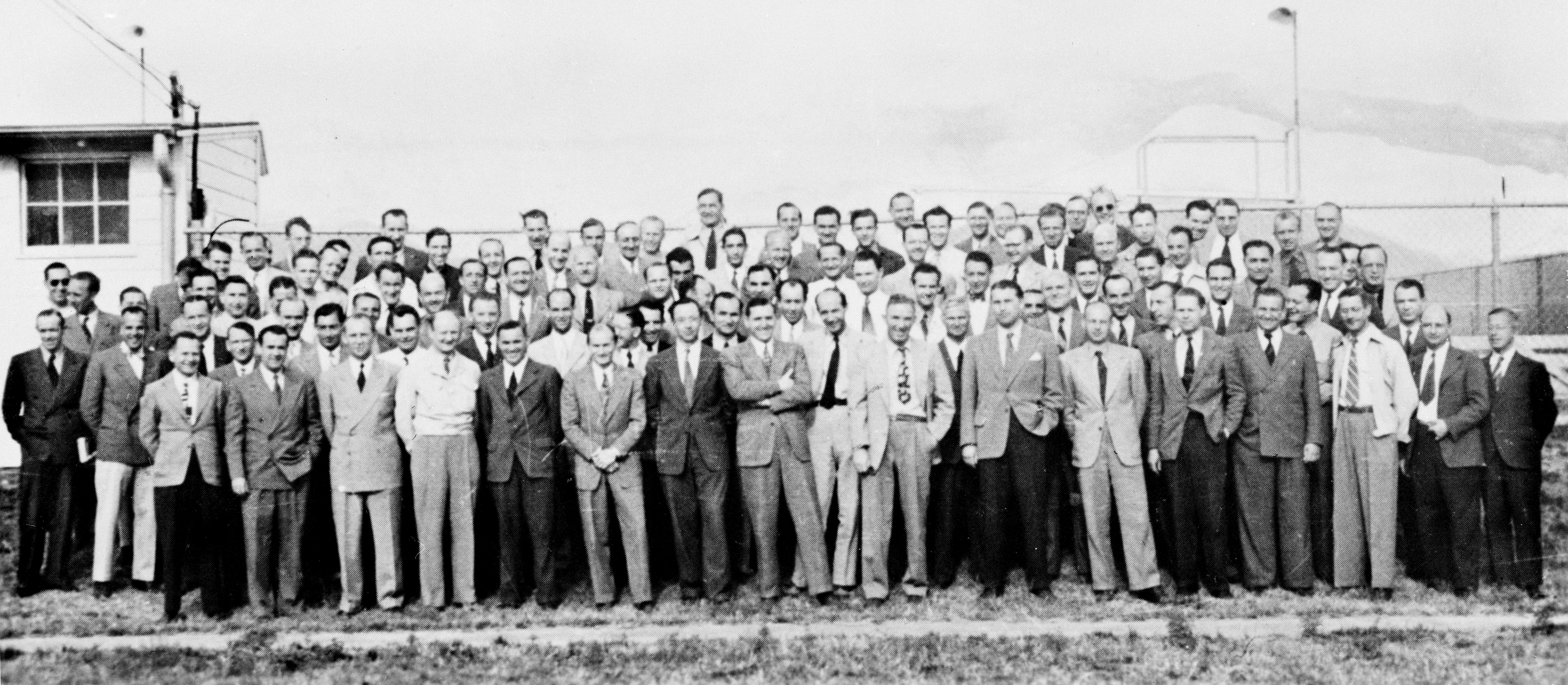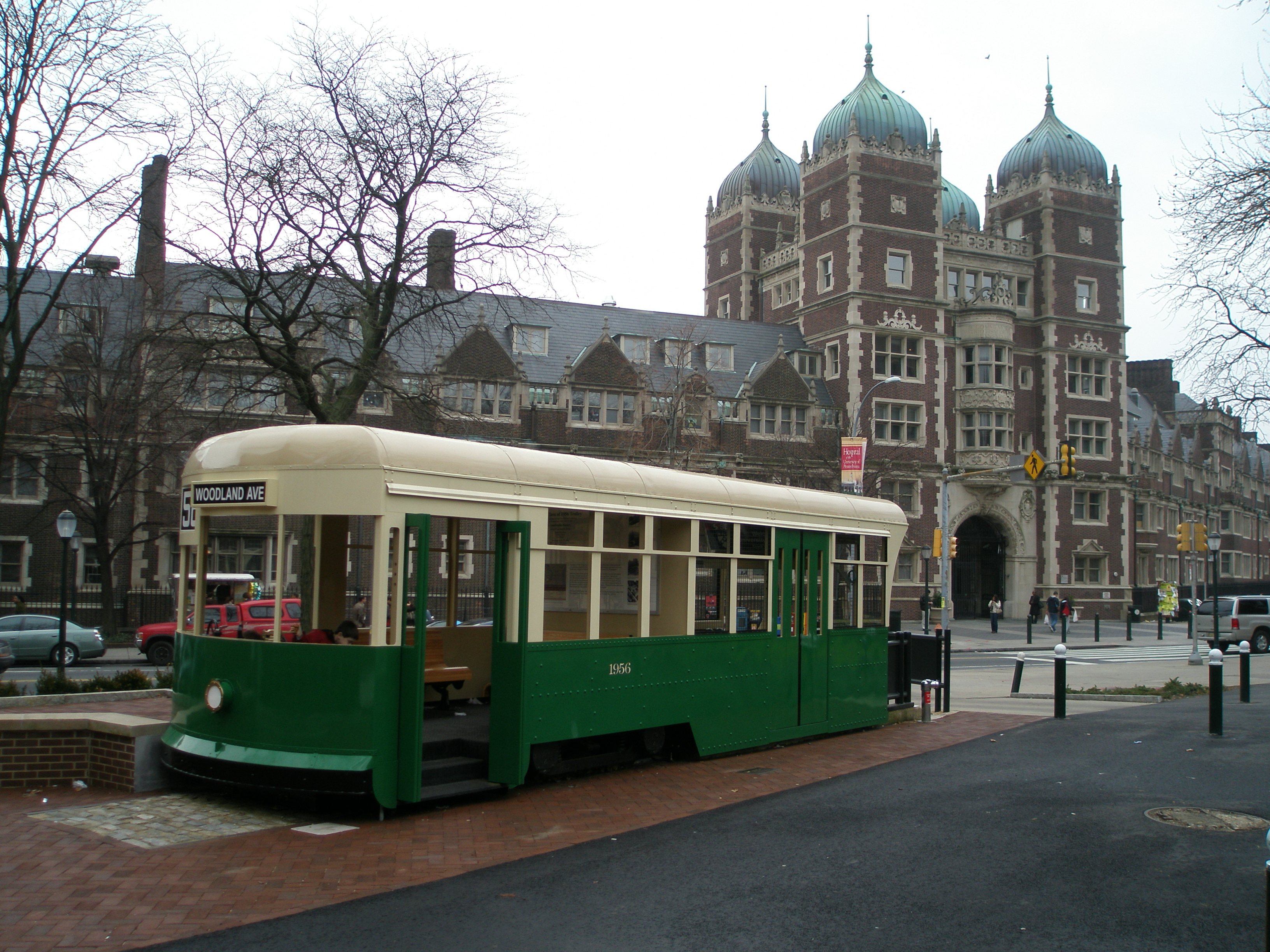|
ENIAC
ENIAC (; Electronic Numerical Integrator and Computer) was the first Computer programming, programmable, Electronics, electronic, general-purpose digital computer, completed in 1945. Other computers had some of these features, but ENIAC was the first to have them all. It was Turing-complete and able to solve "a large class of numerical problems" through reprogramming. ENIAC was designed by John Mauchly and J. Presper Eckert to calculate artillery external ballistics, firing tables for the United States Army's Ballistic Research Laboratory (which later became a part of the United States Army Research Laboratory, Army Research Laboratory). However, its first program was a study of the feasibility of the thermonuclear weapon. ENIAC was completed in 1945 and first put to work for practical purposes on December 10, 1945.* ENIAC was formally dedicated at the University of Pennsylvania on February 15, 1946, having cost $487,000 (), and called a "Giant Brain" by the press. It had ... [...More Info...] [...Related Items...] OR: [Wikipedia] [Google] [Baidu] |
Ballistic Research Laboratory
The Ballistic Research Laboratory (BRL) was a research facility under the U.S. Army Ordnance Corps and later the U.S. Army Materiel Command that specialized in ballistics as well as vulnerability and lethality analysis. Situated at Aberdeen Proving Ground, Maryland, BRL served as a major Army center for research and development in technologies related to weapon phenomena, armor, accelerator physics, and high-speed computing. In 1992, BRL was disestablished, and its mission, personnel, and facilities were incorporated into the newly created U.S. Army Research Laboratory (ARL). The laboratory is perhaps best known for commissioning the creation of the Electronic Numerical Integrator and Computer (ENIAC), the first electronic general-purpose digital computer. History Formation The history of the Ballistic Research Laboratory dates back to World War I with the Office of the Chief of Ordnance (OCO) within the U.S. Army. During the first year of U.S. involvement in the war, OCO w ... [...More Info...] [...Related Items...] OR: [Wikipedia] [Google] [Baidu] |
John Mauchly
John William Mauchly ( ; August 30, 1907 – January 8, 1980) was an American physicist who, along with J. Presper Eckert, designed ENIAC, the first general-purpose electronic digital computer, as well as EDVAC, BINAC and UNIVAC I, the first commercial computer made in the United States. Together, Mauchly and Eckert started the first computer company, the Eckert–Mauchly Computer Corporation (EMCC), which allowed them to further the development of fundamental computer concepts originally conceived by members of the 1945-46 ENIAC programming team, notably Jean Bartik and Kay McNulty, including subroutines, nesting, and the first low-level assembler. They also popularized the concept of the stored program, which was formalized in John von Neumann's widely-read '' First Draft of a Report on the EDVAC'' (1945) and disseminated through the Moore School Lectures (1946). These publications influenced an explosion of computer development around the world in the late 1940 ... [...More Info...] [...Related Items...] OR: [Wikipedia] [Google] [Baidu] |
Digital Computer
A computer is a machine that can be programmed to automatically carry out sequences of arithmetic or logical operations (''computation''). Modern digital electronic computers can perform generic sets of operations known as ''programs'', which enable computers to perform a wide range of tasks. The term computer system may refer to a nominally complete computer that includes the hardware, operating system, software, and peripheral equipment needed and used for full operation; or to a group of computers that are linked and function together, such as a computer network or computer cluster. A broad range of industrial and consumer products use computers as control systems, including simple special-purpose devices like microwave ovens and remote controls, and factory devices like industrial robots. Computers are at the core of general-purpose devices such as personal computers and mobile devices such as smartphones. Computers power the Internet, which links billions of compute ... [...More Info...] [...Related Items...] OR: [Wikipedia] [Google] [Baidu] |
Stored-program Computer
A stored-program computer is a computer that stores program instructions in electronically, electromagnetically, or optically accessible memory. This contrasts with systems that stored the program instructions with plugboards or similar mechanisms. The definition is often extended with the requirement that the treatment of programs and data in memory be interchangeable or uniform. Description In principle, stored-program computers have been designed with various architectural characteristics. A computer with a von Neumann architecture stores program data and instruction data in the same memory, while a computer with a Harvard architecture has separate memories for storing program and data. However, the term ''stored-program computer'' is sometimes used as a synonym for the von Neumann architecture. Jack Copeland considers that it is "historically inappropriate, to refer to electronic stored-program digital computers as 'von Neumann machines. Hennessy and Patterson wrote th ... [...More Info...] [...Related Items...] OR: [Wikipedia] [Google] [Baidu] |
United States Army Ordnance Department
The United States Army Ordnance Corps, formerly the United States Army Ordnance Department, is a sustainment branch of the United States Army, headquartered at Fort Gregg-Adams, Virginia. The broad mission of the Ordnance Corps is to supply Army combat units with weapons and ammunition, including at times, their procurements and maintenance. Along with the Quartermaster Corps and Transportation Corps, it forms a critical component of the U.S. Army logistics system. The U.S. Army Ordnance Corps mission is to support the development, production, acquisition, and sustainment of weapon systems, ammunition, missiles, electronics, and ground mobility materiel during peace and war to provide combat power to the U.S. Army. The officer in charge of the branch for doctrine, training, and professional development purposes is the Chief of Ordnance. The current Chief of Ordnance is Brigadier General Robin Montgomery. History Colonial period to War of Independence During the colonial ... [...More Info...] [...Related Items...] OR: [Wikipedia] [Google] [Baidu] |
John Grist Brainerd
John Grist Brainerd (August 7, 1904 – February 1, 1988) was an American electrical engineer who served as principal investigator on the project to build ENIAC, the first general-purpose electronic digital computer. Later, he was dean of the Moore School of Electrical Engineering at the University of Pennsylvania. Brainerd was born in 1904; he earned a bachelor's degree in electrical engineering from the University of Pennsylvania in 1925, and a Ph.D. in 1929. He became an instructor in the Moore school in 1925 and directed the school from 1954 to 1970. In 1970 he retired, as emeritus University Professor.. Brainerd's most famous contribution, with J. Presper Eckert, John Mauchly, and others, was the creation of ENIAC ENIAC (; Electronic Numerical Integrator and Computer) was the first Computer programming, programmable, Electronics, electronic, general-purpose digital computer, completed in 1945. Other computers had some of these features, but ENIAC was ..., the first ... [...More Info...] [...Related Items...] OR: [Wikipedia] [Google] [Baidu] |
Moore School Of Electrical Engineering
The Moore School of Electrical Engineering was a school at the University of Pennsylvania. The school was integrated into the University of Pennsylvania School of Engineering and Applied Science. The Moore School came into existence as a result of an endowment from Alfred Fitler Moore on June 4, 1923. It was granted to Penn's School of Electrical Engineering, located in the Towne Building. The first dean of the Moore School was Harold Pender. The Moore School is particularly famed as the birthplace of the computer industry: * It was here that the first general-purpose Turing complete digital electronic computer, the ENIAC, was built between 1943 and 1946. * Preliminary design work on the ENIAC's successor machine the EDVAC resulted in the stored program concept used in all computers today, the logical design having been promulgated in John von Neumann's ''First Draft of a Report on the EDVAC'', a set of notes synthesized from meetings he attended at the Moore School. * The ... [...More Info...] [...Related Items...] OR: [Wikipedia] [Google] [Baidu] |
United States Army Research Laboratory
The U.S. Army Combat Capabilities Development Command Army Research Laboratory (DEVCOM ARL) is the foundational research laboratory for the United States Army under the United States Army Futures Command (AFC). DEVCOM ARL conducts intramural and extramural research guided by 11 Army competencies: Biological and Biotechnology Sciences; Humans in Complex Systems; Photonics, Electronics, and Quantum Sciences; Electromagnetic Spectrum Sciences; Mechanical Sciences; Sciences of Extreme Materials; Energy Sciences; Military Information Sciences; Terminal Effects; Network, Cyber, and Computational Sciences; and Weapons Sciences. The laboratory was established in 1992 to unify the activities of the seven corporate laboratories of the U.S. Army Laboratory Command (LABCOM) as well as consolidate other Army research elements to form a centralized laboratory. The seven corporate laboratories that merged were the Atmospheric Sciences Laboratory (ASL), the Ballistic Research Laboratory (BRL), ... [...More Info...] [...Related Items...] OR: [Wikipedia] [Google] [Baidu] |
University Of Pennsylvania
The University of Pennsylvania (Penn or UPenn) is a Private university, private Ivy League research university in Philadelphia, Pennsylvania, United States. One of nine colonial colleges, it was chartered in 1755 through the efforts of founder and first president Benjamin Franklin, who had advocated for an educational institution that trained leaders in academia, commerce, and public service. The university has four undergraduate schools and 12 graduate and professional schools. Schools enrolling undergraduates include the College of Arts and Sciences, the University of Pennsylvania School of Engineering and Applied Science, School of Engineering and Applied Science, the Wharton School, and the University of Pennsylvania School of Nursing, School of Nursing. Among its graduate schools are its University of Pennsylvania Law School, law school, whose first professor, James Wilson (Founding Father), James Wilson, helped write the Constitution of the United States, U.S. Cons ... [...More Info...] [...Related Items...] OR: [Wikipedia] [Google] [Baidu] |
Aberdeen Proving Ground
Aberdeen Proving Ground (APG) is a U.S. Army facility located adjacent to Aberdeen, Harford County, Maryland, United States. More than 7,500 civilians and 5,000 military personnel work at APG. There are 11 major commands among the tenant units, including: * United States Army Communications-Electronics Command (CECOM) * United States Army Combat Capabilities Development Command (CCDC) * United States Army Test and Evaluation Command (ATEC) * Edgewood Arsenal * Adelphi Laboratory Center ** The Army Reserve Information Operations Command ** Unified Cross Domain Services Management Office ** HQ, U.S. Army Contracting Command (Army Contracting Command –APG, Adelphi Contracting Division) ** U.S. Army 93rd Signal Network - Network Enterprise Center ** Logistics Readiness Center ** U.S. Army Cyber Operation Group – 335th Signal Command ** Blossom Point Research Facility History APG is the U.S. Army's oldest active proving ground, established on October 20, 1917, six months aft ... [...More Info...] [...Related Items...] OR: [Wikipedia] [Google] [Baidu] |
Turing-complete
In computability theory, a system of data-manipulation rules (such as a model of computation, a computer's instruction set, a programming language, or a cellular automaton) is said to be Turing-complete or computationally universal if it can be used to simulate any Turing machine (devised by English mathematician and computer scientist Alan Turing). This means that this system is able to recognize or decode other data-manipulation rule sets. Turing completeness is used as a way to express the power of such a data-manipulation rule set. Virtually all programming languages today are Turing-complete. A related concept is that of Turing equivalence two computers P and Q are called equivalent if P can simulate Q and Q can simulate P. The Church–Turing thesis conjectures that any function whose values can be computed by an algorithm can be computed by a Turing machine, and therefore that if any real-world computer can simulate a Turing machine, it is Turing equivalent to a Turing ma ... [...More Info...] [...Related Items...] OR: [Wikipedia] [Google] [Baidu] |
Differential Analyzer
The differential analyser is a mechanical analogue computer designed to solve differential equations by integration, using wheel-and-disc mechanisms to perform the integration. It was one of the first advanced computing devices to be used operationally. In addition to the integrator devices, the machine used an epicyclic differential mechanism to perform addition or subtraction - similar to that used on a front-wheel drive car, where the speed of the two output shafts (driving the wheels) may differ but the speeds add up to the speed of the input shaft. Multiplication/division by integer values was achieved by simple gear ratios; multiplication by fractional values was achieved by means of a multiplier table, where a human operator would have to keep a stylus tracking the slope of a bar. A variant of this human-operated table was used to implement other functions such as polynomials. History Research on solutions for differential equations using mechanical devices, discou ... [...More Info...] [...Related Items...] OR: [Wikipedia] [Google] [Baidu] |







